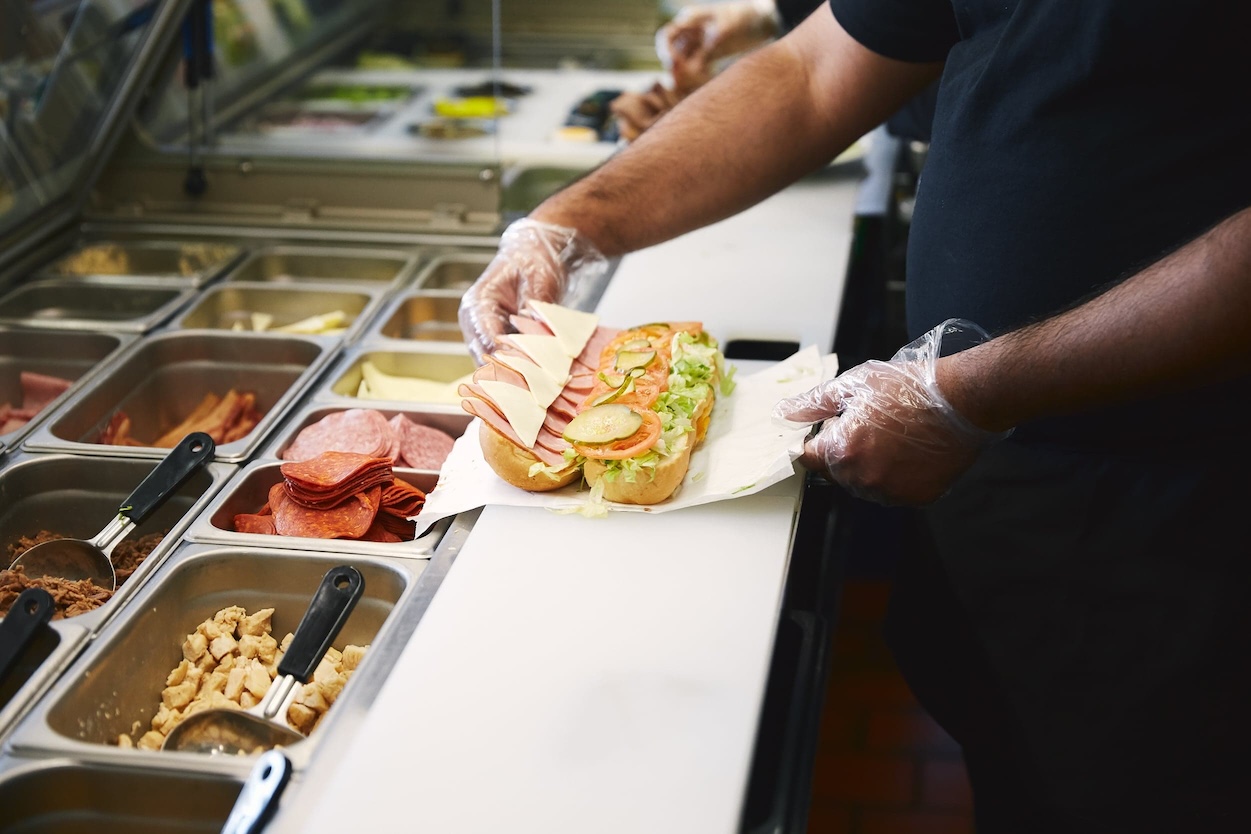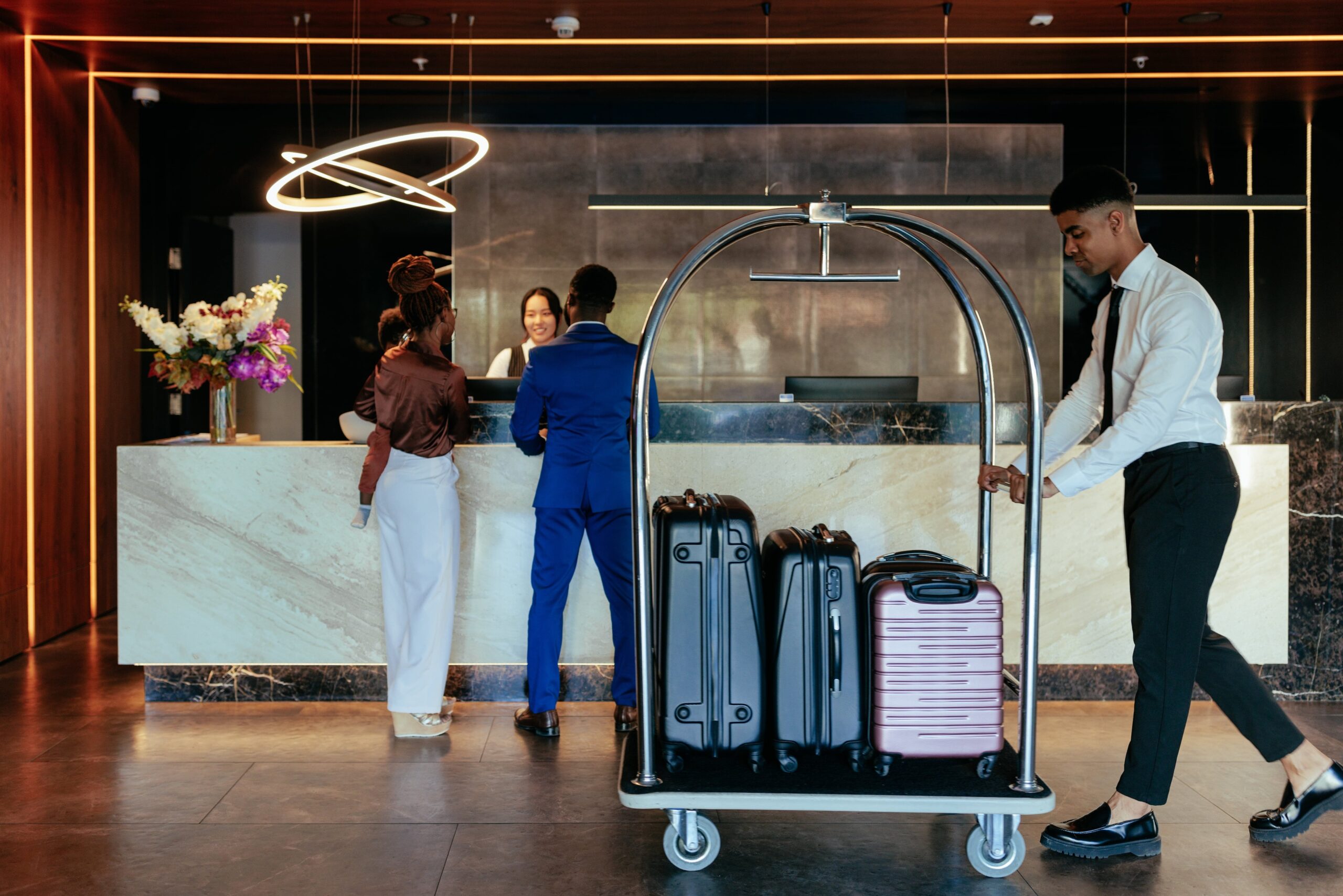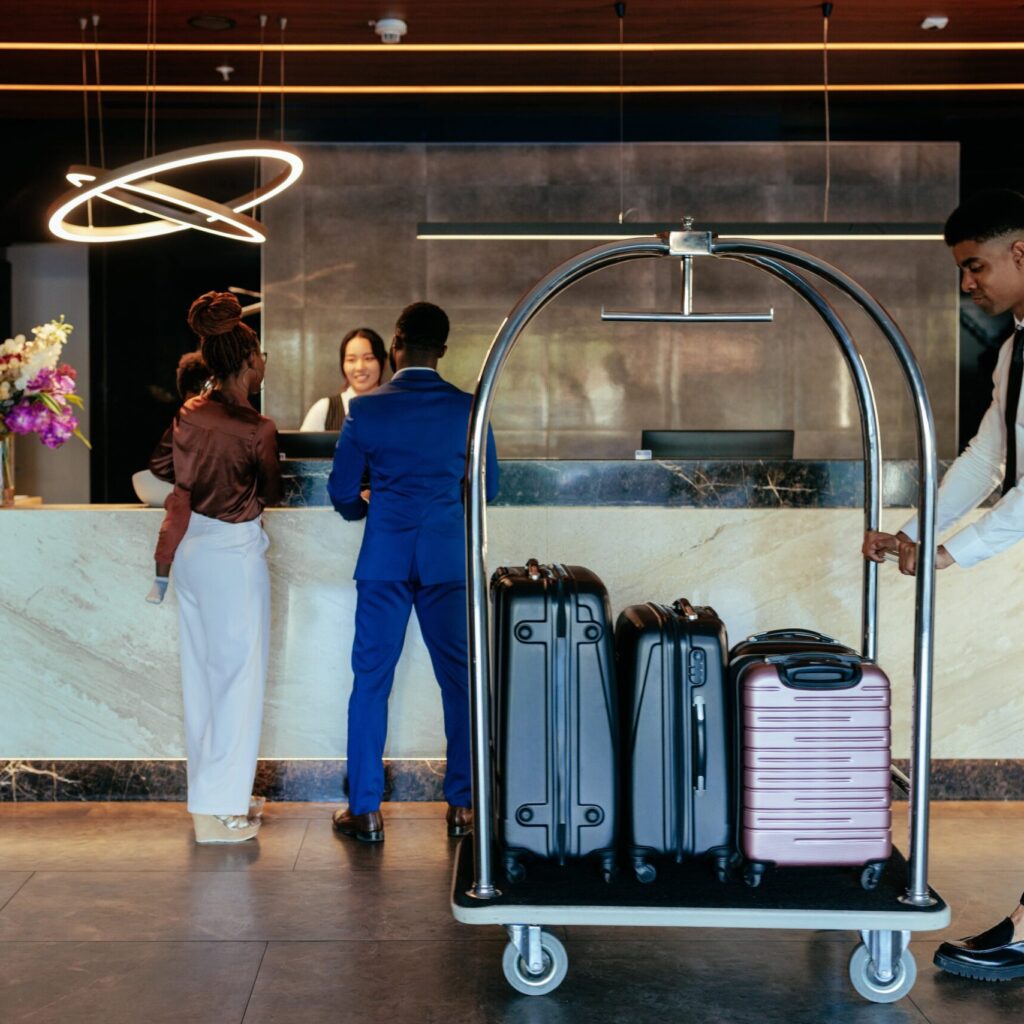Managing employee schedules in quick service restaurants across Minnetonka, Minnesota presents unique challenges that can significantly impact both operational efficiency and staff satisfaction. As the food service industry in this Twin Cities suburb continues to grow, restaurant owners face increasing pressure to optimize their scheduling processes while balancing employee needs with business demands. Effective scheduling isn’t just about filling shifts—it’s a strategic approach that can reduce labor costs, improve customer service, and enhance employee retention in an industry known for high turnover. In Minnetonka’s competitive quick service landscape, implementing the right scheduling services can be the difference between struggling with constant staffing issues and running a smoothly operated, profitable establishment.
The scheduling landscape for Minnetonka’s quick service restaurants has evolved dramatically in recent years, moving from paper schedules and spreadsheets to sophisticated digital solutions. These modern scheduling services offer features specifically designed to address the unique needs of food service operations, from handling rush hour staffing to managing split shifts and accommodating the often changing availability of part-time workers. With AI-powered scheduling solutions becoming increasingly accessible to small businesses, even independent QSRs in Minnetonka can now leverage technology that was once available only to large chains. This guide explores everything restaurant owners and managers need to know about implementing effective scheduling services tailored to the specific demands of Minnetonka’s quick service restaurant environment.
Understanding the Unique Scheduling Challenges for Quick Service Restaurants in Minnetonka
Quick service restaurants in Minnetonka face distinctive scheduling challenges that directly impact their operational efficiency and bottom line. The suburban location creates specific patterns of customer traffic that differ from those in downtown Minneapolis or St. Paul, requiring careful attention to staffing levels throughout different parts of the day. Effective scheduling strategies must account for these unique regional and business-specific factors.
- Seasonal Tourism Fluctuations: Minnetonka’s proximity to Lake Minnetonka creates significant seasonal variation in customer traffic, requiring flexible scheduling approaches that can scale up during summer months and scale down during quieter periods.
- Rush Hour Patterns: The suburb’s commuter patterns create distinct breakfast and dinner rushes, with many residents stopping for quick meals on their way to and from Minneapolis/St. Paul, necessitating precise peak-time scheduling.
- Student Workforce Availability: With several educational institutions in the area, many QSRs rely heavily on student workers whose availability changes dramatically between academic terms and breaks.
- Weather Impact: Minnesota’s extreme weather conditions can dramatically affect both customer traffic and employee ability to commute, requiring scheduling systems that can accommodate last-minute adjustments.
- Competitive Labor Market: Minnetonka’s relatively low unemployment rate creates competition for qualified staff, making schedule flexibility a crucial tool for attracting and retaining employees.
Addressing these challenges requires scheduling solutions that offer both automation and flexibility. Modern employee scheduling systems can analyze historical data to predict staffing needs while allowing for the human touch necessary to accommodate individual employee circumstances. By implementing the right scheduling services, Minnetonka QSR operators can transform this operational challenge into a competitive advantage.
Benefits of Implementing Effective Scheduling Services for Minnetonka QSRs
Investing in advanced scheduling services offers numerous tangible benefits for quick service restaurants in Minnetonka. Beyond the obvious convenience of digital scheduling, these systems provide strategic advantages that can significantly enhance operational performance. Restaurant managers who have implemented modern scheduling solutions report improvements across multiple aspects of their business operations.
- Labor Cost Optimization: Effective scheduling tools can reduce labor costs by 3-5% by ensuring appropriate staffing levels that match customer demand patterns specific to Minnetonka locations, preventing both costly overstaffing and service-damaging understaffing.
- Reduced Administrative Time: Managers can save 5-7 hours weekly on schedule creation and management, allowing them to focus on customer service and other operational priorities rather than struggling with spreadsheets and phone calls.
- Improved Employee Satisfaction: Employee satisfaction increases when schedules accommodate personal preferences and provide advance notice, leading to reduced turnover rates – a critical advantage in Minnetonka’s competitive labor market.
- Enhanced Compliance: Automated systems help ensure adherence to Minnesota labor laws regarding breaks, minor work restrictions, and overtime, reducing the risk of costly violations.
- Improved Customer Service: Properly staffed shifts ensure customers receive prompt service even during peak times, enhancing reputation and encouraging repeat business in Minnetonka’s word-of-mouth driven market.
Implementing effective scheduling services can transform what was once a tedious administrative task into a strategic advantage. For Minnetonka QSRs looking to maintain competitiveness, these solutions offer a path to enhanced productivity and improved operational performance. The return on investment typically becomes apparent within months, as labor costs decrease and both employee and customer satisfaction metrics improve.
Essential Features to Look for in QSR Scheduling Software
When selecting scheduling software for a quick service restaurant in Minnetonka, it’s crucial to identify solutions with features specifically designed for food service operations. The right system should address the unique challenges of QSR environments while remaining accessible for both managers and staff. Understanding the essential features can help restaurant owners make informed decisions when evaluating different scheduling services.
- Demand Forecasting: Look for systems that analyze historical sales data and traffic patterns specific to your Minnetonka location to predict staffing needs accurately, including adjustments for local events and seasonal factors.
- Mobile Accessibility: Mobile-friendly platforms are essential for QSR environments where managers and staff are rarely sitting at computers, allowing schedule viewing and management from anywhere.
- Shift Trading Capabilities: Systems that facilitate employee-managed shift swapping while maintaining manager oversight reduce last-minute scheduling headaches and increase staff flexibility.
- Time and Attendance Integration: Integration between scheduling and time-tracking prevents costly discrepancies and simplifies payroll processing, particularly important for managing part-time staff with variable hours.
- Real-time Communication Tools: Built-in messaging features ensure all staff receive critical updates about schedule changes or operational adjustments, especially valuable during Minnesota’s unpredictable weather events.
- Compliance Monitoring: Automatic alerts for potential compliance issues with Minnesota labor laws help prevent costly violations regarding minor work restrictions, break requirements, or overtime regulations.
The ideal scheduling solution for Minnetonka QSRs combines these features with an intuitive interface that doesn’t require extensive training. Systems like Shyft offer specialized solutions designed specifically for food service environments, with the flexibility to adapt to the unique operational patterns of quick service restaurants in suburban settings. When evaluating options, prioritize systems that offer free trials or demonstrations to ensure the software meets your specific operational needs.
Integrating Scheduling with Other Business Systems
For maximum efficiency, scheduling services should not operate in isolation. Integration with other business systems creates a cohesive operational ecosystem that enhances productivity and data accuracy. Minnetonka QSR operators should prioritize scheduling solutions that offer seamless connectivity with their existing technology stack, creating workflows that reduce redundant data entry and provide comprehensive business insights.
- Point of Sale Integration: Connecting scheduling with your POS system allows for real-time labor cost analysis against sales data, helping Minnetonka managers make informed staffing decisions based on actual performance metrics.
- Payroll System Connectivity: Integration with payroll systems eliminates duplicate data entry and reduces errors, ensuring employees are paid accurately for their actual hours worked, including any shift premiums or overtime.
- Inventory Management Correlation: Some advanced systems link scheduling with inventory needs, ensuring adequate staffing for prep work based on projected inventory requirements for upcoming busy periods.
- HR System Integration: Connecting with HR platforms streamlines employee onboarding and ensures that scheduling accounts for training requirements, certifications, and employment eligibility verification.
- Communication Tools Linkage: Integration with team communication platforms creates unified messaging channels, reducing the confusion of multiple systems for staff announcements and updates.
When evaluating scheduling services, Minnetonka restaurant operators should inquire about available integrations and API capabilities. The most valuable scheduling systems offer pre-built connections with popular QSR technologies or provide open APIs that allow for custom integrations with existing systems. This interconnected approach transforms scheduling from an isolated task into a central component of a data-driven operation, enabling smarter business decisions and more efficient processes throughout the restaurant.
Mobile Scheduling Solutions for On-the-Go Management
The fast-paced environment of quick service restaurants demands scheduling solutions that aren’t tethered to the back office. Mobile scheduling capabilities have become essential for Minnetonka QSR operators who need to manage staffing while actively engaged on the restaurant floor. These mobile solutions empower both managers and employees with anytime, anywhere access to schedules and related functions.
- Real-time Schedule Access: Mobile platforms allow staff to view their schedules instantly from smartphones, eliminating confusion about shift times and reducing missed shifts—particularly valuable for part-time workers juggling multiple commitments.
- On-the-Spot Adjustments: Managers can make immediate schedule changes during unexpected situations, such as when customer traffic surges during local Minnetonka events or when employees call in sick during Minnesota’s cold and flu season.
- Shift Swap Facilitation: Mobile apps streamline the process of finding shift coverage, allowing employees to post and claim available shifts while maintaining management oversight of all exchanges.
- Push Notifications: Automatic alerts ensure staff are promptly informed of schedule changes, new shift opportunities, or requests for coverage, improving response times for urgent staffing needs.
- Time-Off Requests: Employees can submit availability updates and time-off requests directly through mobile platforms, creating a documented trail that helps managers plan future schedules more effectively.
For Minnetonka’s quick service restaurants, mobile-first scheduling solutions align perfectly with the industry’s dynamic nature. These tools transform smartphones—devices already in the pockets of virtually every employee—into powerful scheduling management tools. When evaluating mobile scheduling options, consider factors like offline functionality (important in buildings with poor reception), notification management capabilities, and the intuitiveness of the mobile interface. The right mobile scheduling solution can significantly improve communication efficiency while reducing the administrative burden on management staff.
Employee Engagement Through Flexible Scheduling
In Minnetonka’s competitive labor market, quick service restaurants that offer scheduling flexibility gain a significant advantage in attracting and retaining quality staff. Modern scheduling services can transform employee engagement by accommodating personal needs while still meeting business requirements. This balanced approach recognizes that today’s workforce, particularly younger generations prevalent in QSR environments, highly values work-life balance and scheduling autonomy.
- Preference-Based Scheduling: Advanced systems capture employee availability preferences and incorporate them into schedule creation, respecting personal commitments while ensuring operational needs are met.
- Self-Service Options: Empowering employees with self-service tools for managing their schedules increases their sense of control and reduces manager workload for routine scheduling tasks.
- Split Shift Management: Flexible scheduling can accommodate split shifts that work well for students attending nearby institutions like Minnetonka High School or commuting to Hennepin Technical College, allowing them to work around class schedules.
- Shift Marketplace Functionality: Shift trading platforms enable employees to exchange shifts with qualified colleagues, providing flexibility while maintaining appropriate staffing levels and skill mixes.
- Advanced Notice Policies: Consistent scheduling with adequate advance notice helps employees plan their personal lives, particularly important for Minnetonka’s many working parents juggling childcare arrangements.
Restaurants implementing flexible scheduling practices typically see measurable improvements in employee engagement metrics and reduced turnover rates. This approach recognizes scheduling as not merely an operational necessity but as a strategic tool for workforce management. In an industry where the average turnover rate exceeds 70%, Minnetonka QSRs that leverage scheduling technology to improve work-life balance can achieve significant competitive advantages through improved retention, reduced training costs, and enhanced team continuity.
Compliance with Minnesota Labor Laws in Scheduling
Navigating labor law compliance is a critical consideration for Minnetonka quick service restaurants. Minnesota has specific regulations regarding work hours, breaks, minor employment, and overtime that directly impact scheduling practices. Failing to comply with these regulations can result in significant penalties, legal issues, and damage to your restaurant’s reputation in the community. Effective scheduling services help ensure compliance while maintaining operational flexibility.
- Minor Work Restrictions: Minnesota has strict rules for scheduling workers under 18, including limitations on hours for school days, total weekly hours, and prohibited late-night shifts during school periods—automatic compliance alerts help prevent violations.
- Break Requirements: State law mandates adequate break periods based on shift length, which scheduling software can automatically incorporate into shift planning to ensure compliance.
- Overtime Management: Scheduling systems can track accumulated hours and alert managers before employees approach overtime thresholds, helping control labor costs while maintaining compliance with overtime pay requirements.
- Record-Keeping Requirements: Digital scheduling systems maintain comprehensive records of schedules, actual hours worked, and schedule changes, satisfying Minnesota’s documentation requirements for wage and hour compliance.
- Fair Scheduling Considerations: While Minnesota doesn’t currently have predictive scheduling laws like some states, scheduling best practices include providing reasonable advance notice of schedules and limiting last-minute changes.
Modern scheduling services offer built-in compliance features that automatically flag potential violations before schedules are published. This proactive approach is far more effective than reactive compliance management and can prevent costly mistakes. For Minnetonka QSR operators, particularly those managing multiple locations or employing many minors (common in fast food environments), these automated compliance tools provide invaluable protection against unintentional violations. When evaluating scheduling solutions, prioritize systems with specific compliance features for Minnesota’s labor regulations, including regular updates as laws change.
Data-Driven Scheduling Optimization for Minnetonka QSRs
The most advanced scheduling services leverage data analytics to transform scheduling from an art to a science. For Minnetonka quick service restaurants, data-driven scheduling represents an opportunity to fine-tune staffing with precision, optimizing both customer service and labor costs. By analyzing patterns specific to your location and customer base, these systems can predict staffing needs with remarkable accuracy.
- Historical Pattern Analysis: Advanced systems analyze years of sales and traffic data to identify patterns unique to your Minnetonka location, including seasonal fluctuations related to Lake Minnetonka tourism and local events.
- Weather Impact Modeling: Some platforms incorporate weather forecast data to predict how Minnesota’s variable conditions will affect customer traffic and adjust staffing recommendations accordingly.
- Special Event Correlation: Systems can account for local Minnetonka events, school schedules, and nearby mall promotions that impact restaurant traffic, ensuring appropriate staffing during unusual peak periods.
- Skill Distribution Analysis: Advanced scheduling optimizes not just headcount but also the distribution of specific skills across shifts, ensuring the right mix of experienced and new staff during each period.
- Performance Metrics Integration: Analytics can correlate staffing patterns with performance metrics like speed of service, order accuracy, and customer satisfaction to identify optimal staffing models.
Implementing data-driven scheduling typically yields measurable improvements in both operational efficiency and customer experience. Minnetonka QSRs using these advanced analytics often report labor cost reductions of 3-7% while simultaneously improving service metrics. The key to success is selecting systems that combine sophisticated analytics with user-friendly interfaces that don’t require managers to become data scientists. Look for scheduling services that provide clear visualizations, actionable recommendations, and the ability to override algorithmic suggestions when operational knowledge indicates the need for adjustments beyond what historical data might suggest.
Implementation and Training Best Practices for Scheduling Systems
Successfully implementing a new scheduling system in your Minnetonka quick service restaurant requires careful planning and comprehensive training. Even the most powerful scheduling solution will fail to deliver results if staff and managers don’t fully adopt and correctly use the system. A structured implementation approach increases the likelihood of successful adoption and maximizes return on investment.
- Phased Implementation: Rather than switching all scheduling functions at once, consider a phased approach that gradually introduces features, starting with basic scheduling before advancing to more complex functions like shift trading or forecasting.
- Staff Involvement: Include representatives from different roles in the selection and implementation process to ensure the system addresses actual operational needs and build buy-in from the team.
- Comprehensive Training: Develop role-specific training programs for managers, shift supervisors, and staff members, focusing on the features most relevant to each group’s responsibilities.
- Data Migration Planning: Carefully plan the transfer of existing employee data, historical schedules, and preference information to ensure continuity during the transition period.
- Post-Implementation Support: Establish clear support channels for answering questions and resolving issues during the critical early adoption period, including designated system champions within the organization.
Minnetonka restaurant operators should also consider the timing of implementation, avoiding peak business periods like summer tourism season or major holidays. The ideal implementation window provides enough breathing room for staff to become comfortable with the new system before facing high-pressure situations. Additionally, establishing clear metrics for measuring implementation success—such as adoption rates, time saved on scheduling tasks, or reduction in missed shifts—helps justify the investment and identify areas for further optimization. With thoughtful implementation and thorough training, your scheduling system can quickly transition from a new technology to an indispensable operational tool.
The Future of QSR Scheduling in Minnetonka
The landscape of scheduling technology for quick service restaurants continues to evolve rapidly, with emerging trends promising even greater benefits for Minnetonka QSR operators. Staying informed about these developments helps restaurant owners make forward-looking decisions when investing in scheduling systems, ensuring their chosen solutions won’t quickly become obsolete in this fast-changing technological environment.
- AI-Powered Scheduling: Advanced artificial intelligence is moving beyond simple pattern recognition to truly predictive scheduling that can anticipate staffing needs based on countless variables specific to Minnetonka’s unique market conditions.
- Integration With Gig Economy Platforms: Some scheduling systems are beginning to incorporate on-demand staffing options, allowing restaurants to fill last-minute gaps by accessing qualified workers from gig economy platforms.
- Hyper-Personalized Scheduling: Future systems will likely offer even more sophisticated preference management, potentially incorporating employee life patterns, commute considerations, and work-life balance preferences into automated scheduling algorithms.
- Predictive Compliance: Emerging compliance tools will not only flag potential violations but predict future compliance issues based on scheduling patterns and upcoming regulatory changes at local and state levels.
- Cross-Business Coordination: For employees working multiple jobs (common in QSR environments), future platforms may offer controlled visibility of availability across employers, reducing scheduling conflicts for workers juggling multiple positions.
For Minnetonka’s quick service restaurant operators, these emerging technologies represent both opportunities and challenges. Early adopters of advanced scheduling solutions may gain competitive advantages in operational efficiency and employee satisfaction, but must balance innovation with practical considerations like staff technology comfort levels and implementation costs. When evaluating current scheduling solutions, consider not just today’s needs but the system’s capacity for growth and adaptation to these emerging trends. The most valuable scheduling partners are those that continuously evolve their offerings to incorporate new capabilities while maintaining the usability and reliability essential for day-to-day operations.
Conclusion
Implementing effective scheduling services represents a strategic investment that can transform operations for quick service restaurants in Minnetonka. Beyond the immediate benefits of administrative time savings and improved organization, sophisticated scheduling solutions address the fundamental challenges facing QSRs in this competitive suburban market. By optimizing labor costs, enhancing employee satisfaction, ensuring compliance, and improving customer service, these systems directly contribute to both short-term profitability and long-term business sustainability.
For Minnetonka QSR operators looking to enhance their scheduling processes, the path forward involves carefully assessing your specific operational needs, researching available solutions with features tailored to restaurant environments, and implementing systems with a thoughtful approach that ensures staff adoption. The most successful implementations view scheduling not as an isolated administrative function but as an integrated component of overall business strategy. With the right scheduling services in place, Minnetonka quick service restaurants can achieve the delicate balance of controlling labor costs while maintaining the staffing levels necessary to deliver exceptional customer experiences—ultimately building the reputation and customer loyalty essential for thriving in this competitive market.
FAQ
1. How much can a quick service restaurant in Minnetonka expect to save by implementing digital scheduling services?
Most Minnetonka QSRs implementing modern scheduling solutions report labor cost savings of 3-7% through optimized staffing and reduced overtime. Additional savings come from reduced administrative time (typically 5-7 hours weekly for managers) and lower turnover costs due to improved employee satisfaction. The exact savings depend on your current scheduling efficiency, restaurant size, and the specific features of the system implemented. Many scheduling solutions offer ROI calculators that can provide customized estimates based on your restaurant’s specific metrics.
2. What Minnesota-specific labor laws should my QSR scheduling system help me comply with?
Key Minnesota labor regulations affecting QSR scheduling include: restrictions on minor employment (different rules for 14-15 year-olds versus 16-17 year-olds), mandatory break periods (employers must provide reasonable restroom time and sufficient time to eat a meal for shifts over 4 hours), overtime requirements (payment of 1.5 times regular rate for hours worked beyond 48 in a week), and recordkeeping requirements (Minnesota requires employers to maintain detailed time records). Advanced scheduling systems can help flag potential violations of these requirements before schedules are published, significantly reducing compliance risks.
3. How long does it typically take to implement a new scheduling system in a quick service restaurant?
For a single-location Minnetonka QSR, implementation typically takes 2-4 weeks from signing to full operational use. This timeline includes initial setup, data migration, configuration, staff training, and a transition period. Multi-location implementations may take longer, often following a phased approach. Cloud-based systems generally deploy faster than on-premises solutions. Implementation should be scheduled during relatively slower business periods—for Minnetonka restaurants, this might mean avoiding peak summer tourism months or major local events that drive high customer volume.
4. How can scheduling software help manage the seasonal fluctuations common in Minnetonka’s restaurant business?
Advanced scheduling software addresses Minnetonka’s seasonal variations through historical data analysis, identifying patterns in customer traffic and sales related to summer tourism, winter weather effects, and local events. These systems can create seasonal staffing templates, forecast staffing needs based on projected business levels, and facilitate flexible staffing models combining core staff with seasonal employees. Some systems also integrate with weather forecasts and local event calendars to further refine predictions. The result is more accurate staffing that adjusts proactively to Minnetonka’s seasonal business rhythms rather than reacting after customer service or labor costs have already been impacted.
5. What features best support managing a student workforce in Minnetonka QSRs?
For managing student employees from local schools and colleges, look for scheduling systems offering: semester-based availability templates that can switch automatically between school-year and break schedules, flexible shift minimum durations to accommodate between-class availability, digital availability submissions allowing easy updates when class schedules change, mobile accessibility for on-the-go schedule checks, automated compliance features for minor work restrictions, and built-in shift marketplace functionality enabling students to easily trade shifts when academic commitments arise. These features help Minnetonka QSRs maintain scheduling flexibility while respecting students’ primary commitment to their education, resulting in better retention of these valuable part-time workers.












